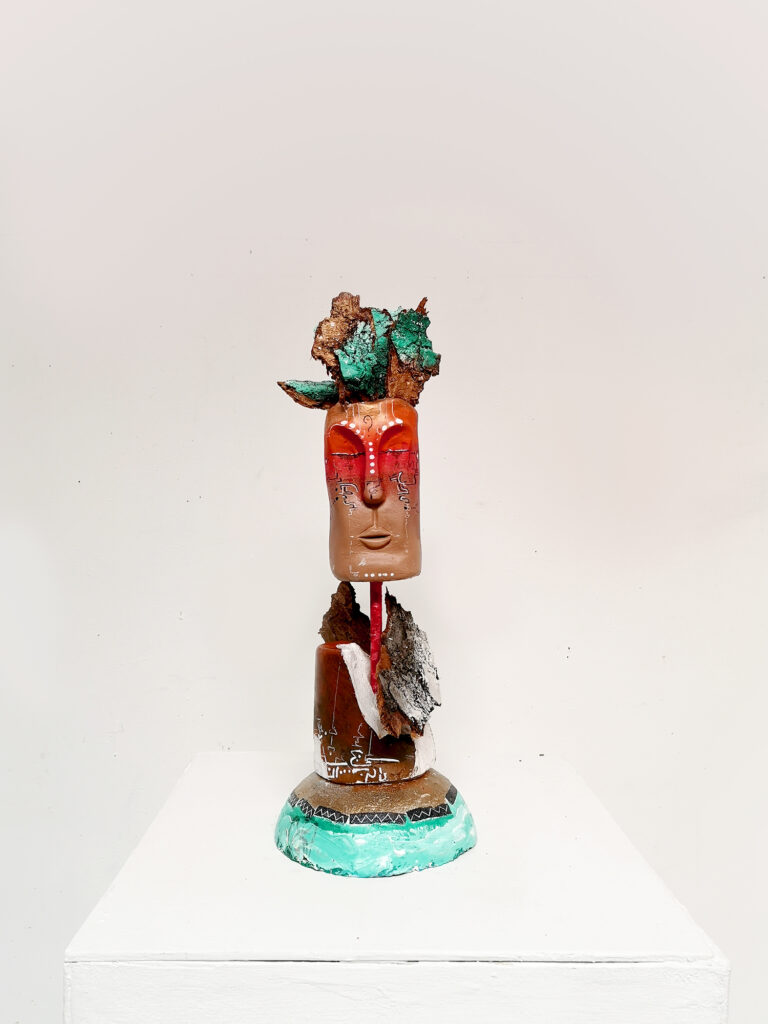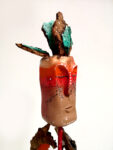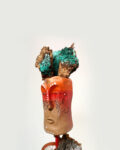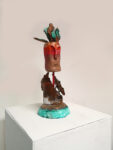-
Dimensions
35h - 15w - 10d cm / 13.7" x 5.9" x 3.93" in
-
Mediums
Clay, Wood, Sprays, Concrete, Acrylics & Sprays
L’etica del Fuoco is a semi-installation sculpture, made with modeled and sculpted clay, painted wood in the upper part of the head, plaster, iron and concrete.
This work identifies the idealization of a natural entity, fire and is partly inspired by the work and envirnomental aim of African master El Anatsui.
Fire plays a fundamental role in human history and has always influenced the development of great civilizations, is often present in religious rituals of purification, rebirth and transit.
This element is always present in literature and art; it inspires countless works that show both its destructive power and its reflective tranquility.
Painters, poets and writers use the image of fire to express complex emotions and philosophical concepts.
Human history is linked to fire which influences its practical aspects and consequently also its symbolic and cultural sphere.
The symbolic value of fire in its benevolent aspect can be grasped in particular in the daily worship of ancient Egypt.
You may already know that in the Egyptian temples the pharaoh, and authorized priests, to worship on his behalf, carried out certain rituals three times a day.
Of these three functions, the most important was certainly the morning one, which began at dawn.
The daily ritual had different phases but they all aimed at one objective, to awaken and animate the divine statue, that is, the statue which, through complex magical procedures, was suitable for hosting the spirit of the god within it.
The sculptors of sacred art in ancient Egypt had to be not only artists and builders of works, they had to be excellent magicians, possessing the secret knowledge, the rekh sesheta, to transform inert matter into a living god.
Its impact is reflected in the mythology, religion, art and literature of several societies, testifying to its enduring importance to humanity.





